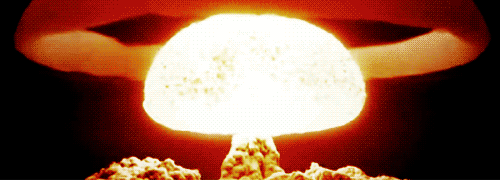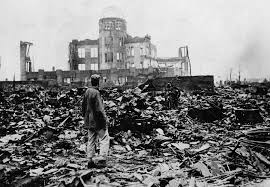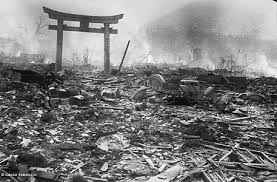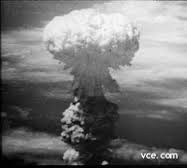
- The greatest problem with nuclear power is waste disposal. Nuclear energy production creates radioactive waste that cannot be disposed or recycled as we would with other wastes. If it sits and infects anything within perimeter of it long enough, problems to humans and nature start to occur. Although it can provide a great amount of power, dangers also come with it.
Nuclear Energy is created by the fusion of atoms. It is created when uranium atoms split.
- At nuclear power plants, the heat to make the steam is created when uranium atoms split – called fission. There is no combustion in a nuclear reactor. Here's how the process works. Pressurized Water Reactors (also known as PWRs) keep water under pressure so that it heats, but does not boil
- Usually and most used to make energy , on a typical nuclear reactor, uranium fuel rods release neutrons with collides with other fuel rods to create a nuclear fission. This nuclear fission chain produces great amount of heat, and this heat is used to rotate a electricity generating turbines.
- After falling for 44.4 seconds, the time and barometric triggers started the firing mechanism. The detonation happened at an altitude of 1,968 ± 50 feet (600 ± 15 m). It was less powerful than the Fat Man, which was dropped on Nagasaki, but the damage and the number of victims at Hiroshima were much higher, as Hiroshima was on flat terrain, while the hypocenter of Nagasaki lay in a small valley.











